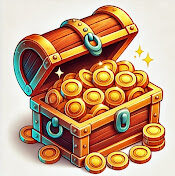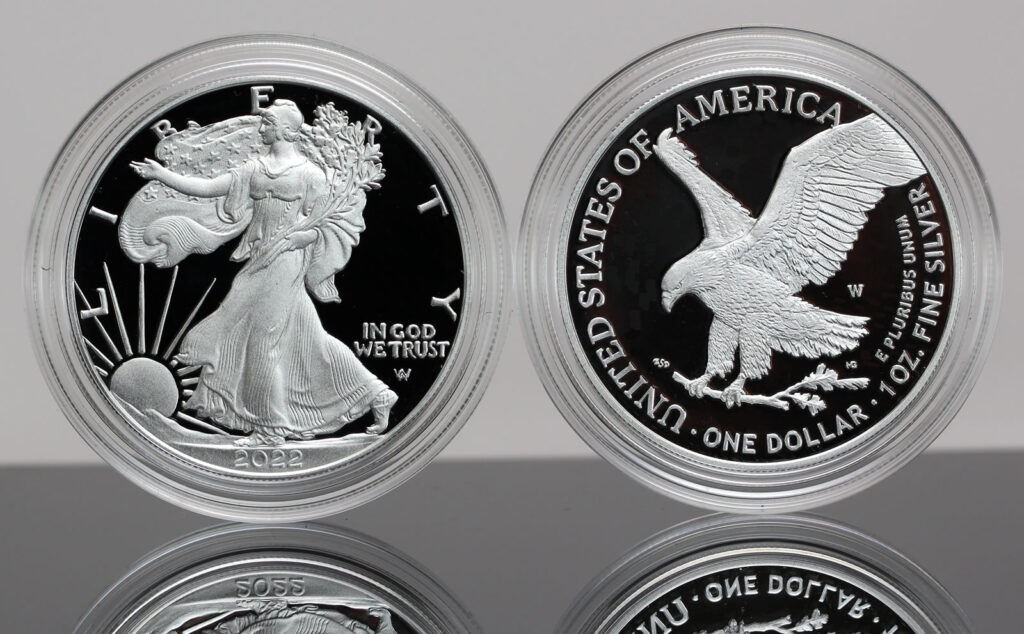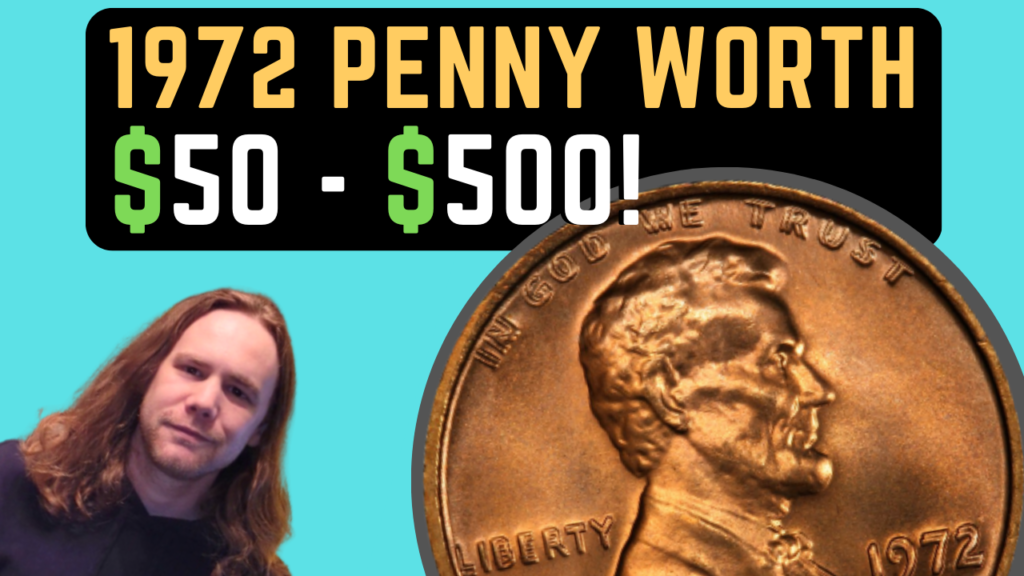
by Al Doyle for CoinWeek…
Although the United States and Canada both have their national currencies denominated in dollars and cents, that doesn’t mean the friendly neighbors are identical when it comes to issuing coins. Canadian silver dollars are a prime example of how the Canadians have often charted their own numismatic course.
Canada struck its first circulating, crown-sized silver dollar in 1935, just as the U.S. was closing out a 141-year history of its own silver dollar coinage. The U.S. dollar coin concept had been discontinued primarily due to a lack of popularity and usage, along with vast inventories of silver dollars in U.S. Treasury vaults. So, why would such a large coin be issued up north, especially with the Great Depression making a $1 coin represent a significant chunk of an average Canadian’s daily wages?
Unlike the U.S., Canada had no history of special commemorative issues prior to 1935. The occasion for the new coin was King George V’s 25th year as monarch. Since the British monarch occupies the obverse of Canadian coinage, a silver $1 for the King’s Silver Jubilee had a certain amount of logic. The date, it’s worth noting, is located on the reverse, unlike U.S. silver dollars.
It’s an elegant-looking coin, featuring a crowned George V on the obverse. The famed Voyageur reverse, depicting an Indigenous person and a voyager paddling a canoe past a small island, debuted on this coin. Even though it was a commemorative, all of the 428,707 pieces produced by the Royal Canadian Mint (RCM) were struck for circulation. Circulated examples can be purchased for well under $40.
The First Two Types
The portrait of George V that had been used on the Canadian cent, 5-cent silver and nickel, dime, quarter, and half dollar since 1911 was used on the silver $1 in 1936. This became the second one-year type for the “Canuck cartwheel,” as George V died on January 20, 1936. The mintage was 339,600. High-grade pieces (MS-63 or better) from 1935 and 1936 turn up with some regularity in third-party holders and are popular on both sides of the border.

George VI appeared without a crown on Canadian coinage beginning in 1937. The mintage of 207,306 dropped to 90,304 in 1938 before another circulating commemorative was issued. A lengthy 1939 royal visit by the King led to 1,363,919 silver $1s being struck—a huge amount for a nation with a population of about 11.3 million at the time. This issue features the Parliament building in Ottawa on the reverse and is a very affordable piece in circulated grades.
Scarce Post-War Dates
The glut of commemoratives combined with World War II meant silver dollars weren’t minted again until 1945. The period from the end of the war to 1948 is where many collectors focus, as it includes four noticeably scarce dates and some popular varieties.
Just 38,391 pieces were struck in 1945, and it remains within the reach of many middle-class numismatists. The 1946 is the most common date in this quartet with a mintage of 93,055. It can be had for $35 to $75 in circulated grades.

The 1947 issue can be complex for a collector who insists on completeness. The year’s production run includes a mix of 65,595 pieces struck with a pointed 7 and a blunt 7 date, along with 21,135 coins displaying a small maple leaf to the right of the 7.
The 1948 silver $1 is one of the most sought-after Canadian coins. With just 18,780 struck, it’s a four-figure purchase even in lower grades. Because altered dates and counterfeits are not uncommon, it’s wise to stick with certified pieces for this key date.
Mintage Comparison
Is there a benchmark for comparing Canadian mintages with U.S. coinage? Historically, Canada’s population has been approximately 10 percent of America’s. Using the 1948 dollar as an example, its mintage would be comparable to a U.S. silver dollar having a figure of about 187,800. While factors like usage in circulation, quality of strike, and existing hoards also have to be considered, the 10-to-1 ratio provides some valuable perspective.
Things went from famine to feast in 1949 when a circulating commemorative was issued to honor Newfoundland joining the Canadian confederation. The mintage of 672,218 explains why this piece of silvery art (featuring John Cabot’s ship, the Matthew, on the reverse) is affordable in all but the highest grades.
Cartwheel mintages were high from 1950 to 1952, as nearly 1.1 million were issued. The dates of this period, along with the 1955 issue, include a number of “Arnprior” varieties with partial or missing water lines on the reverse. These coins were named after Arnprior, Ontario, a small town near Ottawa where the pieces were first seen after a local employer paid workers in silver $1s as a promotional effort.
Queen Elizabeth II and the Silver Flood

Queen Elizabeth II first appeared on Canadian coinage in 1953, and she still occupies that position more than 70 years later. The 1953 mintage of 1,074,578 means it can be obtained for bullion-related prices in Mint State (MS-60) and circulated grades. Less than a quarter of that number (246,606, 268,105, and 209,092 respectively) were struck in 1954, 1955, and 1956. Even with those relatively low mintages, this trio is priced within the range of budget-minded collectors. The 1957 (mintage 496,389) is another affordable option.
It was time for another commemorative in 1958, and the RCM cranked out more than 3 million British Columbia Centennial silver dollars. This distinctive issue is known for a detailed totem pole on the reverse. It was the beginning of a decade-long flood of Canadian cartwheels. Just over 6 million pieces were created from 1959 to 1962. That was a large number for Canada, but it was just a preview of coming attractions.
Why would the RCM strike:
- 4,179,981 silver dollars in 1963,
- nearly 7.3 million Charlottetown Commemoratives in 1964,
- 10,768,569 pieces in 1965,
- just over 9.9 million 1966-dated $1s in 1966, and
- 6,767,496 Confederation Centennial Commemoratives in 1967?
That is nearly 39 million coins and 23.4 million ounces of silver, as the Canadian dollar is 0.800 fine and contains 0.60 troy ounce of silver, compared to the 0.900 fine U.S. silver dollar with 0.7736 ounce of silver.
The American Connection
The silver dollar rush didn’t happen because Canadians suddenly traded in their $1 bills and the popular red $2 bills for big silver disks. Most of what was made in Ottawa went south of the border during one of the great coin bull markets in history.
It was a time of raging speculative fever for modern Brilliant Uncirculated (BU) rolls and Proof sets, and Canadian Proof-like (PL) sets (comparable to U.S. Proof sets) were an ideal product for the times. The addition of a PL silver dollar meant the Canadian sets contained about 1.1 ounces of silver, which made an already attractive product even more appealing. Much of the silver $1 mintage went into collector sets, and numerous business strikes ended up in 20-piece rolls purchased by American speculators.
With no U.S. Proof sets available from 1965 to 1967 and the removal of silver from most U.S. coinage, Canadian PL sets became one of the hottest items in American coin shops. Combine more than an ounce of silver with the exoticness of “foreign” coins, and it’s not hard to see why many collectors developed an interest in Canadian dollars.
The 1867-1967 commemorative stands out for the Canada goose in flight on the reverse. The “diving goose” variety is the result of a rotated die and is available in BU and Proof-like. It was the last issue of a 33-year series of attractive and very collectible coins, as pure nickel planchets replaced silver in 1968. Whether a collector’s budget is puny or great, there are Canadian silver dollars available at every price point.
* * *
The post Canadian Silver Dollars: A Different Kind of Cartwheel appeared first on CoinWeek: Rare Coin, Currency, and Bullion News for Collectors.




